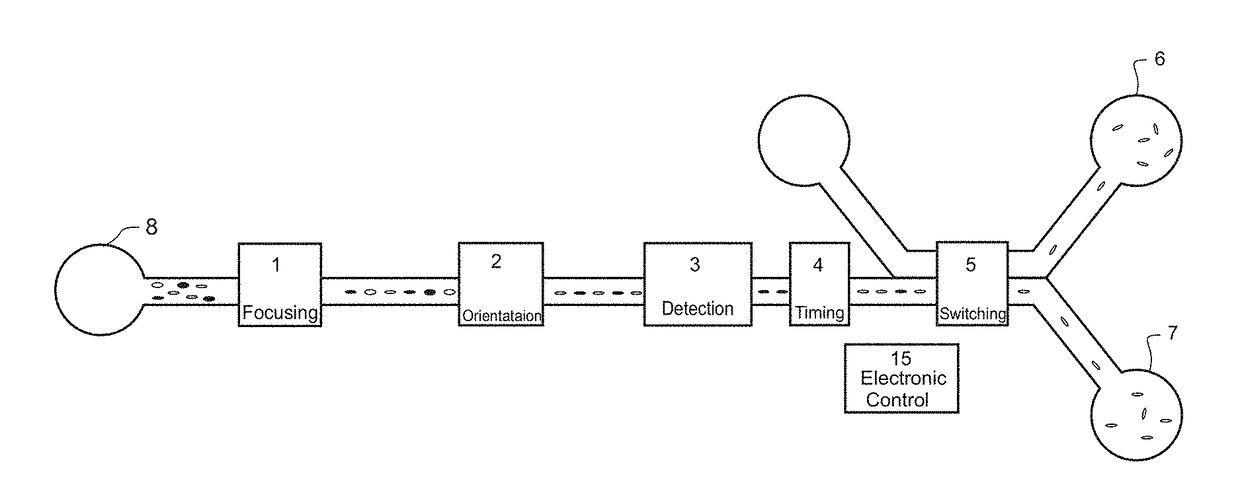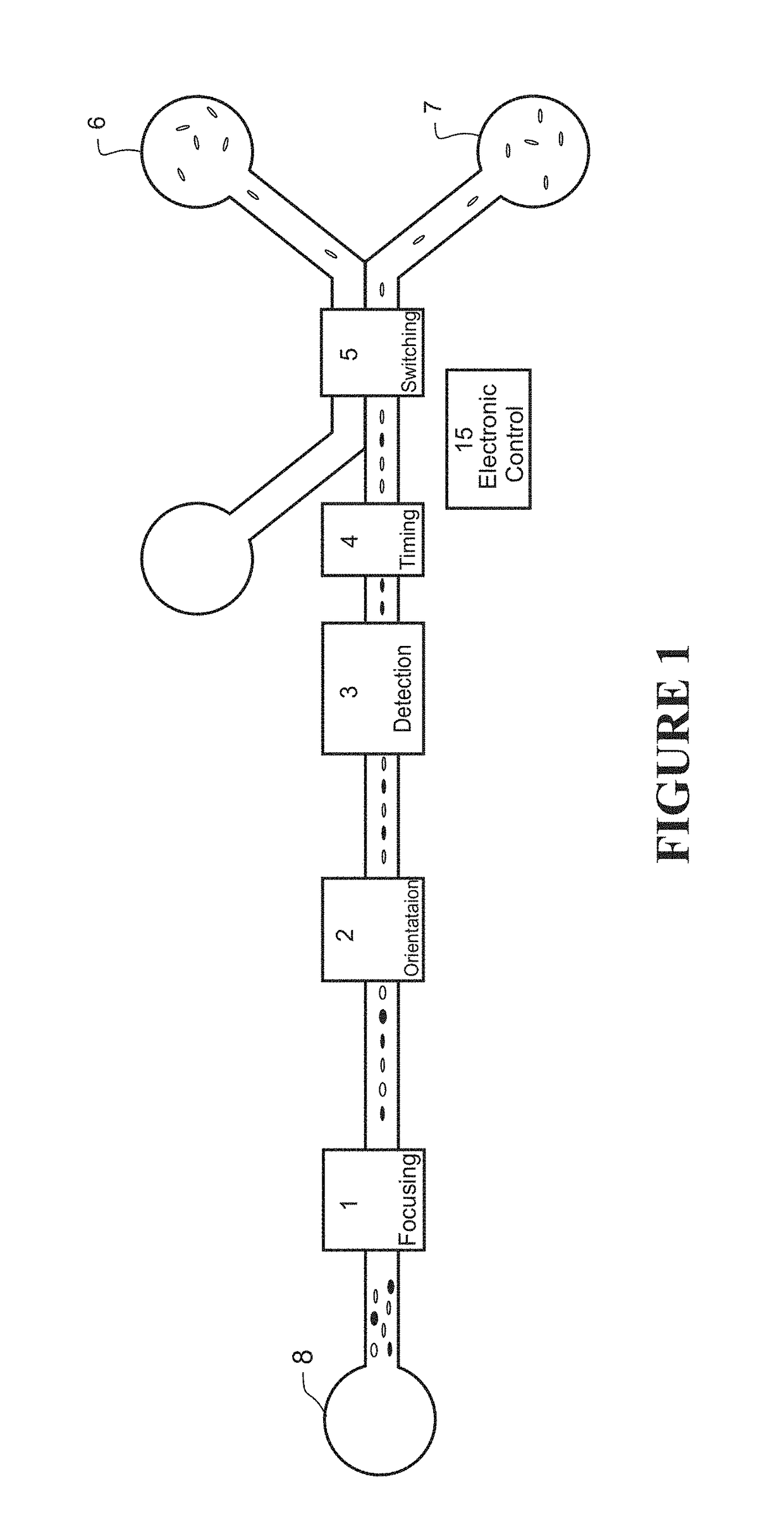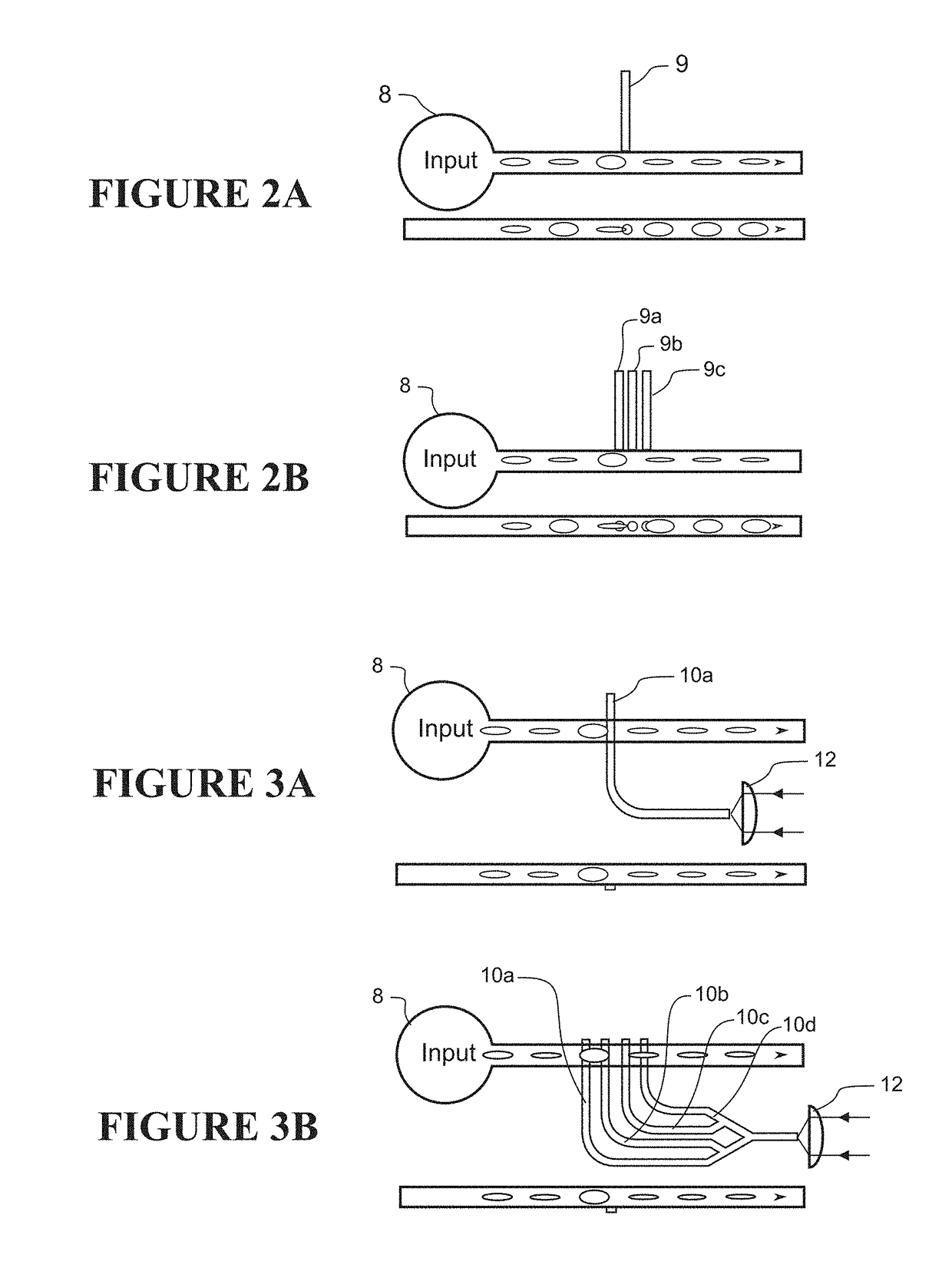Method and system for microfluidic particle orientation and/or sorting
a microfluidic system and particle orientation technology, applied in fluorescence/phosphorescence, laboratory glassware, instruments, etc., can solve the problems of loss of cells during the sorting process, difficulty in sorting out relatively rare cells, and low purity
- Summary
- Abstract
- Description
- Claims
- Application Information
AI Technical Summary
Benefits of technology
Problems solved by technology
Method used
Image
Examples
example 1
[0066]Simulations were conducted using the finite element method (FEM) to approximate the action of optical forces on asymmetric particles. Specifically, the optical forces applied to elliptical particles situated near waveguides such as those described above were calculated. The orienting angular torques were calculated and the trapping / propulsive forces were also calculated. 2-dimensional (2D) approximations of elliptical particles (a cylinder) with a 10 μm:2 μm major:minor axis were placed at the terminus of the 2D approximation of a single mode optical optical fiber, a slab waveguide—FIG. 7a. The resulting torque applied to such an elliptical particle as a function of its orientation with respect to the waveguide optical axis is shown in FIG. 7b. The applied input power in the waveguide is 50 mW. Waveguide modes polarized parallel (TM) and perpendicular to (TE) the plane of simulation are shown. The same 2D particle approximation was placed above a 2D approximation of a ridge wa...
example 2
[0067]The images of FIGS. 12a-c which show symmetrical particle displacement by an optical field as a particle P moved past the end of a wave-guide terminus W in a 100 μm wide rectangular microfluidic channel flow F were collected with a 10× microscope objective imaged onto a CMOS digital camera sensor. The particle was a 10 μm diameter polystyrene spherical bead, and is shown flowing from top to bottom in FIG. 12. FIG. 12a shows the particle in the fluid flow before the waveguide. The particle interacted with the optical beam (250 mW of 532 nm coupled into a single mode fibre at >50% efficiency) diverging from the waveguide terminus. This interaction generated the strong scattering seen saturating the image of FIG. 12b. The optical force pushed the particle by displacement d as shown in FIG. 12c without stopping the flow of the particle along the microfluidic channel.
example 3
[0068]FIG. 13 illustrates the orienting effects of the optical field at the terminus of a waveguide W adjacent to the wall of a microfluidic channel. A particle P with an asymmetric shape specifically a bovine spermatozoa, was carried in a fluid flow from top to bottom in a fluid flow F in a microfluidic channel. The particle was inert and unable to move under its own propulsion. As shown in FIG. 13a the spermatozoa initially presented a dark scattering orientation to the imaging system. After passing through and interacting with the optical field at the terminus of the optical waveguide (outlined in FIG. 13) the spermatozoa continued to flow down the microfluidic channel with a new orientation and a displacement from its initial position. The particle was moved away from the channel wall after the interaction and rotated to a new orientation, but continued to flow down the channel. The new orientation of the spermatozoa presented a white head, indicating a rotation of 90 degrees ab...
PUM
 Login to View More
Login to View More Abstract
Description
Claims
Application Information
 Login to View More
Login to View More - R&D
- Intellectual Property
- Life Sciences
- Materials
- Tech Scout
- Unparalleled Data Quality
- Higher Quality Content
- 60% Fewer Hallucinations
Browse by: Latest US Patents, China's latest patents, Technical Efficacy Thesaurus, Application Domain, Technology Topic, Popular Technical Reports.
© 2025 PatSnap. All rights reserved.Legal|Privacy policy|Modern Slavery Act Transparency Statement|Sitemap|About US| Contact US: help@patsnap.com



